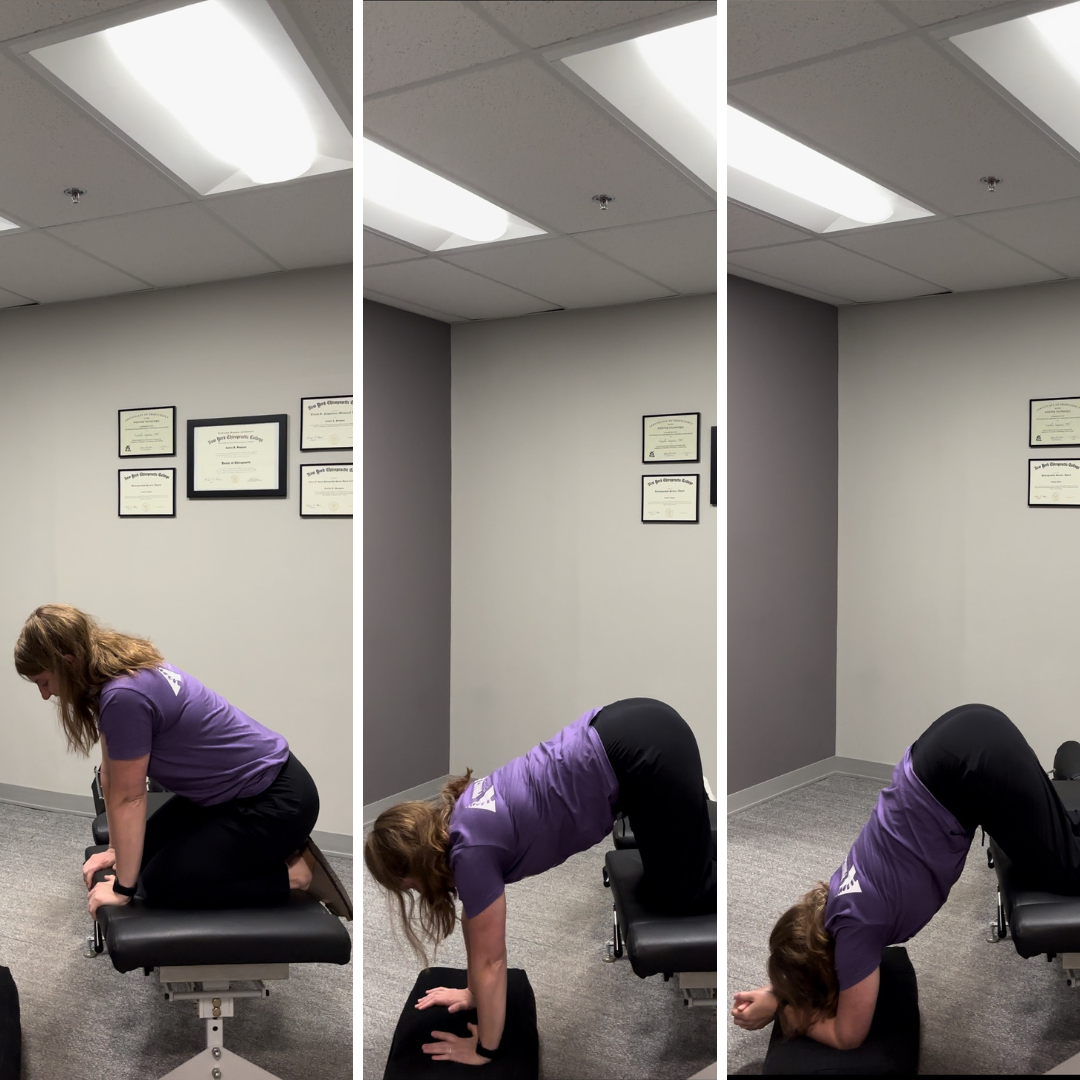I recommend the Forward Leaning Inversion to all my pregnant patients with babies not in the vertex position. Recently, I’ve seen a cluster of breech cases, so I’ve been teaching this technique frequently.
What is Forward Leaning Inversion?
The Forward Leaning Inversion is a technique from Spinning Babies, a resource known to many who’ve experienced a breech pregnancy. I’ve suggested this method to patients throughout my career. A few years ago, I took a course with a Spinning Babies Professional, which enhanced my confidence in teaching it. Patients already familiar with this movement often find it more comfortable after receiving tips in my office.
This exercise involves positioning your hips above your shoulders, essentially turning you upside down. The main goals are:
- Relaxation: It offers a moment for deep breathing, helping to calm the central nervous system.
- Movement: By going against gravity, the baby gets more space to move into a more favorable position, ideally vertex.
- Reduce Torsion: Spinning Babies suggests that twisting in the ligaments holding the uterus may limit the baby’s space, causing a non-optimal position.
When to Use It.
Spinning Babies advises starting any of their exercises in the second trimester. Most patients inquire about the baby’s position in the third trimester. At 30 weeks, if the baby isn’t head down, Spinning Babies recommends doing seven forward leaning inversions daily. Once the baby turns vertex, the frequency drops to one inversion per day until birth.
How to Do a Forward Leaning Inversion.
The best way to learn this move is by watching a demonstration, either live or via video. In the office, I show patients how to do it, and then they practice under supervision.
To perform the Forward Leaning Inversion, you need a surface about 16 inches taller than another. Start in a tall kneeling position, with your hips pushing towards your heels. Place your hands on the edge in front of you and walk them down to the lower surface, one at a time. Once stable, drop onto your forearms and relax your head between your arms. Hold this position for 3-5 deep breaths. Then, push up onto your hands, take a deep breath, and return to the tall kneeling position. For a visual guide, you can watch a demonstration HERE.
If you have any questions or want to schedule an appointment, feel free to email me or book an appointment HERE.





